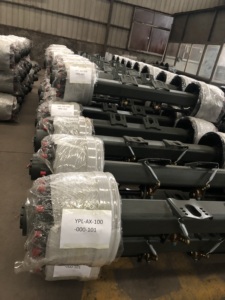Maintenance Requirements
Important: Regular maintenance is essential to prevent premature wear and ensure safe operation of your trailer. Neglected axles can lead to dangerous failures and costly repairs.
-
Regular Lubrication
Bearings should be lubricated every 12 months or 12,000 miles (whichever comes first) using high-quality grease. Inspect bearings for wear during lubrication.
-
Tire Maintenance
Rotate tires every 5,000 miles and maintain proper inflation pressure. Uneven tire wear can indicate axle alignment issues that need addressing.
-
Regular Inspections
Check all axle components quarterly, including springs, u-bolts, and mounting hardware. Look for rust, cracks, or deformation that might indicate impending failure.
-
Proper Loading
Distribute load evenly across the trailer. Overloading causes excessive stress on axles, while uneven loading can create dangerous handling characteristics.










































































































































































































































































 浙公网安备 33010002000092号
浙公网安备 33010002000092号 浙B2-20120091-4
浙B2-20120091-4